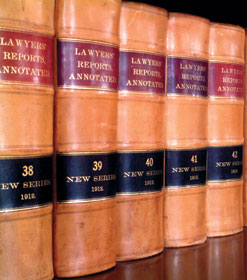

The quality of witness testimony has been highlighted by two major cases in South Africa which have received international prominence lately. In these cases, highly qualified advocates have delved down into every detail of evidence provided by witnesses and questioned their positions from every conceivable angle.
Some of this questioning has been accompanied by shock tactics, verbal attacks, and confrontational questioning, while in other cases witnesses have been called on to explain every facet of what they have declared in statements or in court, repeatedly and at length. In some quarters, there have been accusations that people are ‘buying justice’ with expensive lawyers. To others there have been feelings that the justice system is simply not prepared or competent enough to deliver a verdict that genuinely reflects the reality of the case.
For me one of the major features of these trials is the questioning of Zola Tongo, one of the state witnesses in the Dewani case, by the defence advocate. In this instance, a highly qualified top defence advocate, trained in questioning techniques with a support team to extensively analyse information about the case, is cross examining a person with a basic education about an event that occurred four years ago, and who has been in a prison environment since his own conviction. The judge’s response to the testimony provided by Tongo was that it was ‘was riddled with material contradictions’ and fell ‘far below the threshold’.
I have sympathy for Judge Traverso in having to deal with such conditions, but I also have a very real concern about what kind of quality of input would she expect under such conditions from a person recollecting what happened four years ago, and even recollecting what was made in a statement all that time ago. Can we honestly believe that we are likely to get a clear and accurate depiction under pressure of extensive and fine details four years previously where the witness is subject to hours of cross-examination designed to catch him out. While I acknowledge that emotional and more intense experiences are likely to be remembered far longer and more vividly, most of us have trouble remembering what we had for dinner last week.
In contrast to eye witness collection which has inherent limitations over time, CCTV evidence has no time expiration other than the system capability or the media material that it is saved on. CCTV has also been used extremely successfully in a wide range of cases to successfully prosecute offenders.
However, if we compare the standards to which CCTV is judged compared to eye witness or other recording media, there appears to be a vast difference. This may be partly due to an expected high standard for CCTV, and if this is not met, then the evidence is written off. Yet CCTV in all its forms can play a part in proving involvement in crime, placing people at the scene, demonstrating behaviour or body language, and making use of less definite identifiers such as clothing descriptors, gait, physical characteristics and others.
In the Dewani case, there were CCTV recordings of various aspects of the case. Further, there were extensive phone records linking the accused. A comment from the judge on the CCTV evidence was that it merely demonstrated that the encounters had taken place, but not what was said or discussed during those contacts. Nevertheless, she made a comment in respect of one piece of CCTV where she inferred that the behaviour of Dewani did not show that he was hurried as claimed, instead seeming relaxed on his way to breakfast that morning.
In my view, there is a major need for CCTV to be effectively integrated into a prosecution process where it can complement and substantiate the other evidence.
Often, CCTV is seen as the major component of evidence, or is seen as an incidental add-on to the rest of the evidence. Where people do think seriously about an integrated approach using CCTV, they typically get effective results.
I recently reviewed CCTV footage that could have had a material impact on a case, yet it was never used because it and its impact was not planned for. Prosecutors, magistrates, judges, and even managers of organisations would benefit from having greater input on the meaning and contribution of CCTV evidence. Parties for the defence, whether in-company or in the legal system have attacked CCTV evidence and expected it to be perfect. Is this onus of proof for CCTV unreasonable in comparison to other legal evidence? To what extent are people going to present tampered evidence with all the legal consequences for themselves if this is found out? If a small problem is experienced with CCTV evidence, should this invalidate the entire meaning?
This is a critical philosophy regarding CCTV evidence presentation – it is not everything or bust, but should be a considered presentation of the implications of the video evidence even with its limitations. We do have prosecutors who have embraced CCTV while recognising its imperfections for the contribution it can make – Christhenus van der Vijver, in an iLegal 2013 presentation indicated the importance of integrity of data, expert witness and good reputation, but maintained that CCTV footage with limited quality could still provide important circumstantial evidence in successful prosecutions.
Legal experts are also reluctant to discuss the body language in CCTV footage within court situations. The point is understandably made, that judges may not accept or understand the substance or accuracy of the body language. They cite a lack of understanding by magistrates and judges of the area. Yet Judge Traverso herself made an interpretation from the body language that she viewed. This indicates that, systematically and scientifically conveyed, body language can impact on judge’s decisions.

The UK has in the past had somebody convicted for a crime based on the way that they walked to establish presence at the scene – through expert podiatrist testimony, along with other evidence. It is not an all or nothing argument. CCTV evidence has a depth of use that we have perhaps only touched on. The danger is that it gets written off before we have even begun.
Dr Craig Donald is a human factors specialist in security and CCTV. He is a director of Leaderware which provides instruments for the selection of CCTV operators, X-ray screeners and other security personnel in major operations around the world. He also runs CCTV Surveillance Skills and Body Language, and Advanced Surveillance Body Language courses for CCTV operators, supervisors and managers internationally, and consults on CCTV management. He can be contacted on +27 (0)11 787 7811 or [email protected]
| Tel: | +27 11 787 7811 |
| Fax: | +27 11 886 6815 |
| Email: | [email protected] |
| www: | www.leaderware.com |
| Articles: | More information and articles about Leaderware |
© Technews Publishing (Pty) Ltd. | All Rights Reserved.